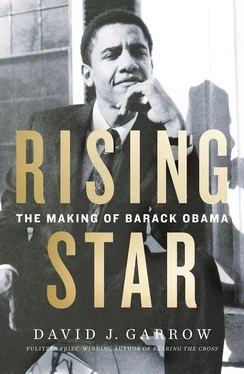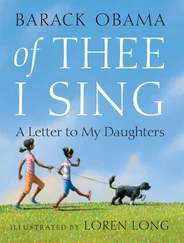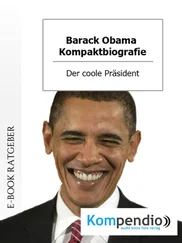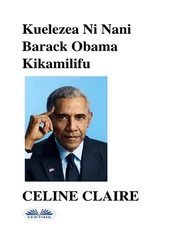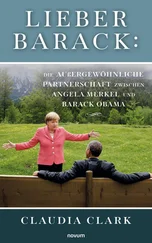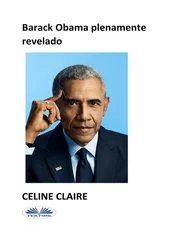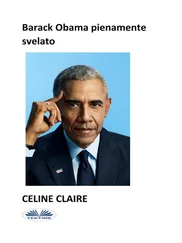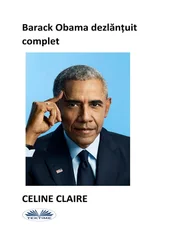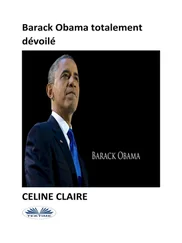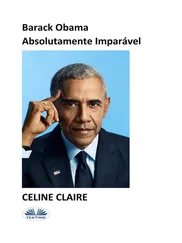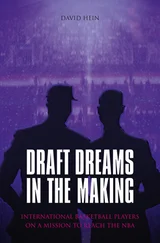Irrespective of what magazine pictures young Barry did or did not see, the overarching question of how and why anyone would seek to alter their visible racial identity had become a staple of U.S. popular culture in the late 1960s, even if the notion of any African American becoming white was starkly out-of-date in the new era of “I’m Black and I’m Beautiful.” Obama’s encounter with the pictures had seemingly been a “turning point,” “a transformation in the life story that marks a considerable shift in self-understanding” and in “his racial identity development.” The Obama of 1995, 2004, and 2007–08 certainly agreed—“Growing up, I wasn’t always sure who I was”—regardless of whether at age ten, at age eighteen, or even at age twenty-seven he actually pondered the memory of those images. 20
Sometime in the late spring of 1970 Ann Dunham, in concert with her father and no doubt her mother, decided that within a year’s time, when Barry would begin fifth grade, he should continue his future schooling in Honolulu rather than Jakarta. Stan Dunham’s twenty-year career as a furniture salesman had ended sometime in 1968, following changes in Bob Pratt’s enterprises, and by 1969, he was one of about twenty-five agents at John S. Williamson’s John Hancock Mutual Insurance agency in downtown Honolulu. Perhaps because of a decrease in income from that shift, Stan and Madelyn had left the rental home at 2234 University Avenue and relocated to unit 1206 in the Punahou Circle Apartments at 1617 South Beretania Street, just a few blocks south of Punahou School.
Ann had been aware of Punahou, and its unequaled-in-Hawaii educational reputation, since her earliest months in Honolulu. Her son was even conceived just across Punahou Street from its spacious campus. Founded in 1841 by Christian missionaries, Punahou had a student body that was still predominantly white—haole, in local parlance—and its alumni included many of Oahu’s civic elite. Fifth grade was one of the two best opportunities—ninth was the other—for youngsters who had not started elementary school there to gain admission, as class sizes increased at the middle and then high school levels.
It is unknown when Ann first thought of sending Barry there, but Stanley had become good friends with Alec Williamson, who also worked at his father’s insurance agency. Alec’s dad had graduated from Punahou in 1937, and both of his sisters had gone there as well, although he had not. Punahou administered admissions tests and required personal interviews. It was “the quintessential local school,” Alec’s sister Susan later explained, and the Dunhams were mainlanders, but John Williamson was more than willing to recommend Stanley’s bright grandson to his alma mater: “My dad wrote the letter,” Alec recounted forty years later.
Sometime in the summer of 1970, eight-year-old Barry, apparently unaccompanied, flew back to Honolulu to live for some weeks with his grandparents—and, more important, to interview with Punahou’s admissions office and take the necessary tests. In his own later telling, those were glorious weeks—lots of ice cream and days at the beach, a radical upgrade from daily life and school in Jakarta. Then, one late July or early August afternoon, after an appointment at Punahou, and with Barry still dressed to impress, Stan took his hapa-haole—half-white—grandson to meet one of his best friends, a sixty-four-year-old black man who had fathered five hapa-haole Hawaiian children of his own. 21
During their first ten years in Honolulu, Stan and Madelyn’s favorite shared pastime had become contract bridge. Madelyn’s brother Charles Payne later said they played “with almost a fanaticism” and “they were really, really into it” and “worked well together.” Through that hobby, they had met another bridge-playing couple: Helen Canfield Davis, a once-wealthy white woman in her early forties, and her almost-two-decades-older African American husband, Frank Marshall Davis.
By 1970, Frank Davis’s publications, involvements, and activities—some self-cataloged, others invasively and meticulously collected by the Federal Bureau of Investigation from 1944 until 1963—were extensive enough to suggest that Davis had led three lives. And indeed he had: almost twenty years as a widely published, often-discussed African American poet and journalist, close to a decade as a dues-paying member of the Communist Party USA, and an entire adult life as an unbounded sexual adventurer.
Born the last day of 1905 in Arkansas City, Kansas—just sixty miles south of Wichita and the neighboring small towns where Stan and Madelyn Dunham would grow up some fifteen years later—Frank’s parents divorced while he was a child. He was raised by his mother, stepfather, and grandparents; he graduated from high school, spent a year working in Wichita, and then attended Kansas State Agricultural College. Already interested in poetry and journalism, he left school in 1927 to move to Chicago and found work with a succession of black newspapers there and in nearby Gary, Indiana. In 1931 Frank moved to Atlanta for a better newspaper job, and while there, he met and married Thelma Boyd. He returned to Chicago in 1934, drawn back primarily because of an intense affair with a married white woman who encouraged him to pursue poetry more seriously. His first volume of poems, Black Man’s Verse, appeared in mid-1935, followed by two more volumes in 1937 and 1938. By the early 1940s Davis had a reputation as an African American writer of significant power and great promise, a leading voice in what would be called the Chicago Black Renaissance.
Decades later, one scholar of mid-twentieth-century black literature would say that Davis was “among the best critical voices of his generation,” but his most thorough biographer would acknowledge that “Davis’s poetry did not survive the era in which it was written,” in significant part because much of it was so polemically political. Another commentator observed that “even at the moments of narratorial identification with the folk, a certain distance is formally maintained.” Similarly, asked years later about an oft-cited poem titled “Mojo Mike’s Beer Garden,” Frank readily acknowledged that his portrayal “was sort of a composite.”
Starting in 1943–44, Frank also began teaching classes on the history of jazz at Chicago’s Abraham Lincoln School, a Communist-allied institution aimed especially at African Americans. Frank would later complain that “only two black students” took the course in four years, but among the whites who enrolled was a twenty-one-year-old, newly married woman with a wealthy stepfather named Helen Canfield Peck. Within little more than a year, she and Frank had secured divorces and were married in May 1946.
In or around April 1943, Frank had become a dues-paying member of the Communist Party USA, according to FBI informants within the party. From mid-1946 until fall 1947, Frank wrote a weekly column for a newly founded, almost openly Communist newspaper, the Chicago Star; in 1948 he published 47th Street: Poems, which scholars later said was his best book of verse.
During the summer of that year, Helen Canfield Davis, who had also joined the party, read a magazine article about life in Hawaii. Not long after that, Frank spoke about the islands with Paul Robeson, the well-known singer who shared his pro-Communist views. Robeson had visited Hawaii in March 1948 on a concert tour sponsored by the International Longshoremen’s and Warehousemen’s Union (ILWU) to boost the left-wing Progressive Party. Frank also heard about life in the islands from ILWU president Harry Bridges. Then that fall, Helen received an inheritance of securities worth tens of thousands of dollars from her wealthy stepfather, investment banker Gerald W. Peck. With that windfall, Frank and Helen decided to see for themselves what Hawaii was like for an interracial couple; they packed with an eye toward making this a permanent move and arrived in Honolulu on December 8, 1948.
Читать дальше
